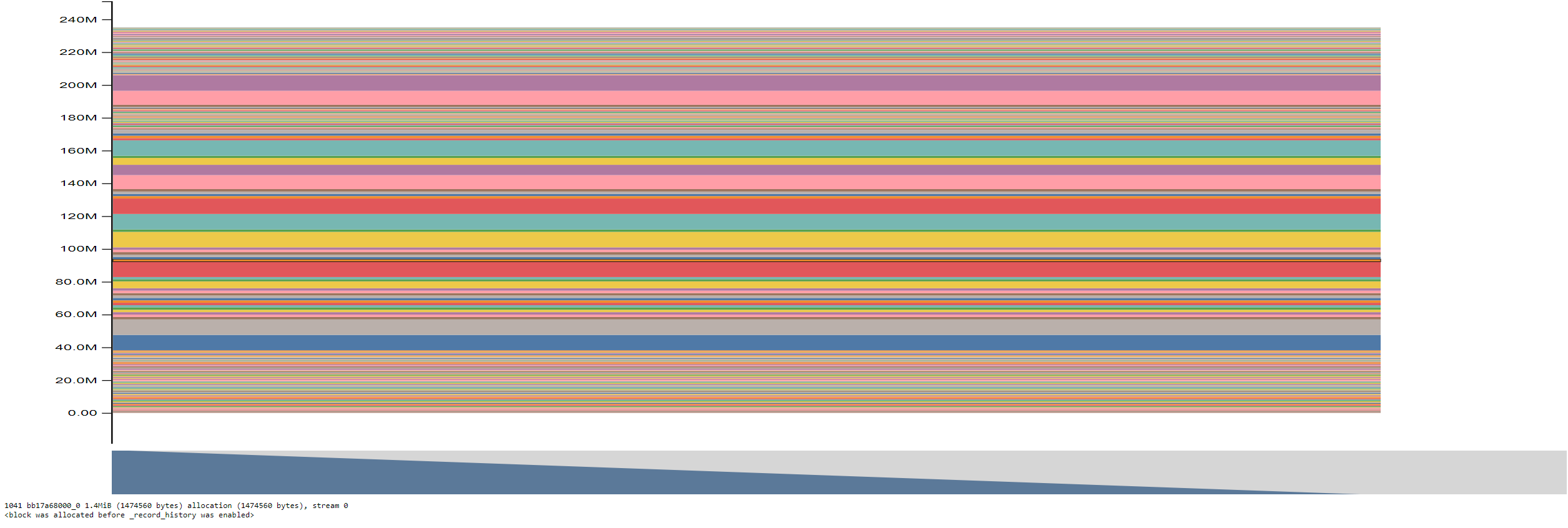Research repository for the IS-WiN laboratory at Clemson University. Conducted research includes; inference, classification, and GPU-[CUDA] CNN accelerations.
Improved Deeplabv3+ utilizing Mobilenetv3 network for decoding operations to increase segmentation speed. ASPP and DCNN modules used alongside ReLu activation functions.
Same as RUN1-Default except includes a curated CUDA optimizer for inference and quantization.
Same as RUN2-CUDA-SuperClass-ReLu except utilizes ELU activation functions.
This section outlines the components of CUDA memory analysis and what to look for:
-
Purpose: The active cache timeline provides a timeline of events related to the GPU memory cache. This cache is responsible for caching recently freed GPU memory to expedite future allocations.
-
What to Look For:
-
Purpose: The active memory timeline shows the timeline of allocations and deallocations of CUDA memory during the execution of your program.
-
What to Look For:
- Memory growth: Look for patterns of memory growth over time. Sudden spikes in memory usage might indicate a memory leak or inefficient memory management.
- Frequent allocations and deallocations: Excessive allocations and deallocations may lead to memory fragmentation, which can impact overall performance.
- Unusual patterns: Identify any unusual patterns or spikes in memory usage that might indicate unexpected behavior in your code.

-
Purpose: The allocator state history records the history of allocation events, showing the sequence of operations that led to the current state of GPU memory.
-
What to Look For:
- Leaked allocations: Identify any allocations that are not followed by deallocations. These could be indicative of memory leaks.
- Frequent reallocations: Excessive reallocations may indicate inefficient use of memory, potentially impacting performance.
- Allocation patterns: Understand the allocation patterns to optimize memory usage. For example, reusing existing memory instead of frequently allocating new memory can be more efficient.

Below is an example code snippet for a simple C++ CUDA optimizer for inference and quantization:
// Include the necessary headers
#include <iostream>
#include <cuda_runtime.h>
// Define CUDA kernel for optimization
__global__ void optimizeKernel(float* input, int size) {
int idx = blockIdx.x * blockDim.x + threadIdx.x;
if (idx < size) {
// Perform optimization on input data
input[idx] = input[idx] * 0.8; // Example: Quantization
}
}
// CUDA optimizer function
void cudaOptimizer(float* input, int size) {
// Allocate device memory
float* d_input;
cudaMalloc((void**)&d_input, size * sizeof(float));
// Copy data from host to device
cudaMemcpy(d_input, input, size * sizeof(float), cudaMemcpyHostToDevice);
// Define block and grid dimensions
int blockSize = 256;
int gridSize = (size + blockSize - 1) / blockSize;
// Launch the CUDA kernel
optimizeKernel<<<gridSize, blockSize>>>(d_input, size);
// Copy data back from device to host
cudaMemcpy(input, d_input, size * sizeof(float), cudaMemcpyDeviceToHost);
// Free device memory
cudaFree(d_input);
}
int main() {
// Example usage
const int dataSize = 1024;
float inputData[dataSize];
// Initialize input data
// Call CUDA optimizer
cudaOptimizer(inputData, dataSize);
// Process optimized data
return 0;
}